Mountabu Sightseeing
Dilwara Temples
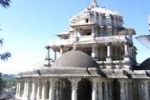
Located 2½ km from the town Mount Abu, these famous Jain temples were constructed between 11th century AD and 13th century AD by Chalukyas. Widely recognized for its artistic use of fine marble, delicacy of its engravings and master craftsmanship, Dilwara temples are considered to be incomparable and exceptional amongst all the Jain temples in India. The ceilings, pillars, panels and doorways of the temples are minutely carved and present the paragon of architectural perfection. Dedicated to the 24 Tirthankaras of Jainism, Dilwara Temple is one of the most prominent Jain pilgrim places in the world.
A congregation of five Jain temples makes the famous Dilwara Temples. They are:
(1) Shri Adi Nathji temple / Vimal Vasahi Temple (Dedicated to Lord Rishabh, the first Jain Tirthankar.)
(2) Shri Neminathji temple / Luna Vasahi Temple (Dedicated to Lord Neminatha, the 22nd Jain Tirthankar.)
(3) Shri Rishabha Devji temple / Pithalhar Temple (Dedicated to Lord Rishabh, the first Jain Tirthankar.)
(4) Shri Parshva Nathji temple / Khartar Vasahi Temple (Dedicated to Lord Parshva, the 23rd Jain Tirthankar.)
(5) Shri Mahavir Swamiji temple (Dedicated to Lord Mahavir, the 24th Jain Tirthankar.)
Vimal Vasahi Temple was built by Vimal Shah in 1021. This temple is famous for its Ranga Manda, Navchowki and Gudh Mandap. Lotus-buds, flowers, petals, scenes from Jain and Hindu mythology, 16 Vidhyadevis and female musicians playing musical instruments are amongst the elegant carvings of this temple.
Luna Vashi temple was raised by Vastupal and Tejpal, the two brothers of Porwad community, in 1230 AD. Designed after the Vimal Vasahi temple, this temple is noteworthy for its Rang Mandap, displaying 72 idols of Jain Tirthankaras and 360 figures of Jain monks. In the Gudh Mandapa of this temple is seated a black idol of Lord Neminath. The Kirthi Stambha of this temple was constructed by Rana Kumbha of Mewar.
Pithalhar Temple was constructed by Bhima Shah. An enormous idol of Lord Rishabha, also worshipped as Adinath, made of Panchdhatu is placed here.
Shri Parshva Nathji temple, a three storied building and the tallest Jain temple of Dilwara was set up by Mandlik in 1458-59 AD. The sculptures of Dikpals, Yakshinis, Shalabhanjikas and Vidhyadevis are similar to those found in Khajuraho and Konarak temples.
Shri Mahavir Swamiji temple is the latest and the smallest temple built in 1582 AD. The temple was decorated by the artists of the Sirohi district in 1764.
Nakki Lake
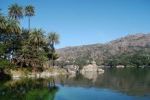
Nakki Lake, a very well known tourist destination in Mount Abu has almost become synonymous to the name of the city. Recognized as the only artificial Indian lake positioned at the height of 1200 meters, this lake is situated very close to the main market of Mount Abu. Noteworthy for the bizarre rocks that surround the lake, namely Toad Rock, Nun Rock and Nandi Rock, Nakki Lake creates a very picturesque panorama and is extremely famous as a picnic spot. The Toad Rock gets its name after its shape, as it appears like a toad about to dive into the lake.
This beauteous lake dwelling in the lap of hills has two enticing myths behind it. According to one myth, this lake was dug by Gods with their nails – ‘Nakh’ and thus it is named Nakki. The natives here consider this lake to be very sacred and worship it. Another myth says that a sculpture named Rasiya Balam, in order to win the hand of king’s daughter in marriage had dug the lake overnight.
The exquisite Nakki Lake is very serene and calm and boating facilities are availed for the tourists here. Many shops are parked around the lake and you can by the Abu special items, handicrafts, mementos and souvenirs from these shops. Taking a stroll around the Nakki Lake and spending your evenings watching the setting sun with your near and dear ones is also an amusing experience. A snack bar built in boat shape is another adorable place. Recently, in the year 2006 -07, Nakki Lake got a huge financial aid.
Toad Rock
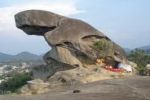
This huge rock named after its natural toad like shape is parked over a small hill near the famous Nakki Lake. The rock is perched in such a way that it resembles a toad about to jump into the lake. The toad keeps an eye not only on the lake but also on the entire Abu town and it is seen from any part of Mount Abu.
A favorite picnic spot in Mount Abu, the Toad rock provides an excellent climb to the adventure lovers. Apart from the toad rock, other rocks like the Camel Rock, the Eagle Rock, the Whale Rock, the Nun Rock, the Cobra Rack, the Owl Rock, the Monkey Rock, the Sentinel Rock, the Incredible Hulk Rock Balancing Rock and the Bear Rock are some other masterpieces of natural architecture in Mount Abu.
Sunset Point
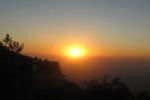
Situated south west to the famous Nakki Lake, this acclaimed picnic spot offers a spectacular view of setting sun and magnificent view of the surrounding hills when their edges are blanketed with shimmering golden light. The splendid mountain ranges, fascinating colorful sky and the dazzling Nakki Lake look extremely gorgeous at this dusk hour. Myriads of visitors can be spotted at the sunset point and they create a festive atmosphere every evening. Food courts and souvenir outlets make a very good business every day. Marble statues, wooden toys, sandalwood items, handicrafts and other artifacts are sold in these shops. Pony ride is another popular amusement savored here.
Honeymoon Point
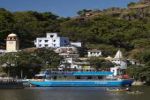
Situated North West of the Nakki Lake and very close to the sunset point, honeymoon point is also known as Anadara Point. Named after the nearby Anadara Village, this point is perched at the altitude of 4000 feet. Captivating view of the landscapes down, thrilling vista of the valley around and brilliant splendor of the setting sun can be treasured from here.
An outstanding feature of Honeymoon point is the Lover’s Rock. Chiseled by the forces of wind, water and sun, the natural sculpture resembles a man and a woman together. The newly wedded couples find this place to be very charming and romantic. Hundreds of couples come to Mount Abu to celebrate their honeymoon every year. Quite soon a new ropeway is going to start from the honeymoon point. This ropeway will link honeymoon point to Bhairu Tarak. It will be a 4 kilometers ride and the ropeway will pass above the Anadara village at the elevation of 3500 feet.
Guru Shikhar
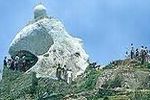
Honored to be the crown of the Aravalli Mountain Ranges, Guru Shikhar is situated at the altitude of 1722 meters. Esteemed and very much adored by the adventure lovers, Guru Shikhar promises a very exciting and intrepid trek. Located 15 km from the heart of the city, the Guru Shikhar peak also offers an astounding and stunning view of the blossoming sylvan terrain around. The refreshing chilly breeze and the serenity of the environment make this a very precious tourist destination of Mount Abu.
Positioned at the top is a very sacred shrine of Lord Dattatraya, an incarnation of the Hindu Trinity – Brahma, Vishnu and Mahesh. The footprints of Lord Dattatraya can be seen here. The temple is built in a white color with a small fragment being a surprising pink. A huge bell made of brass inscribing the year 1488 of Vikram Samvat i.e. 1411 AD adds to the attraction of this temple. A temple of the mother of Lord Dattatraya – Goddess Ansuya is also a must visit place.
‘Brahmakhadd’ is a temple dedicated to Lord Shiva where the traditional Shiva Lingam is not found. Instead, there is a pit which is believed to have been created by Lord Shiva when he put his foot there. It is further said that this pit is actually so deep that it goes directly into the earth and touches water. A statue of Goddess Parvati and a huge statue of Nandi are placed outside the temple.
Achalgarh
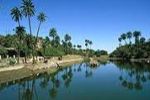
Achal Garh, as the name suggests is a fort built by Rana Kumbha, a Parmar King of Mewar in 14th century. He conquered Mount Abu defeating the contemporary Chauhan King and established Achalgarh. The original purpose of constructing this fort was surveying the movements of the enemy army and also keeping an eye on the surrounding region. The fort houses a famous temple of Achaleswar Mahadev, Kantinath Temple and other historic Jain temples. Achalgarh is approximately 5 miles away from Mount Abu city on the road towards Guru Shikhar.
The Achaleswar Mahadev temples houses the footprints of Lord Shiva embedded in stone and thus makes this a holy place of pilgrimage. The Nandi situated at this temple is made of Panchadhatu and it weights about 4 tones.
Mandakini Lake situated nearby harbors a well known image of a Parmar king Adi Pal. Along with his image, there are three buffalos designed too which were shot by the king and so they are seen pierced by a arrow. According to a legend, Mandakini Lake used to be filled with Ghee and three demons in the form of these buffalos used to come and drink the Ghee. Adi Pal killed them and saved the Ghee.
The Achal Garh fort has two gates namely Hanumanpol and Champapol. The fort is not in a very good condition today.
Adhar Devi Temple
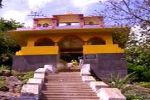
Situated 3 km from the heart of the city, the Adhar Devi temple is one of the leading pilgrim places of Mount Abu. The special feature of this temple is that it is chiseled out of a one giant rock. You will have to climb approximately 360 stairs to take the ‘Darshana’ of the Goddess Adhar Devi. The temple is a cave like structure and the visitors have to stoop at the entrance to get inside.
Dedicated to Goddess Durga, this temple gets its name based on a myth. It is believed that originally the idol in the temple was hanging in the air. The Goddess was ‘Adhar’ i.e. away from the land. Another myth says that when Lord Shiva was carrying the half burnt body of Goddess Parvati from her father’s place to his abode, the ‘Adhar’ or lips of the Goddess dropped at this place.
The temple houses many beautifully carved statues. The way up to the temple offers a very picturesque view of encompassing mountains and the skirting valley. The temple is overcrowded by the devotees during the nine days of Navaratri festival as it is believed to be very auspicious to take the Darshana of Goddess Durga during these nine days.
Shri Raghunathji Temple
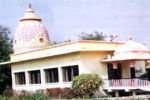
Dedicated to Lord Vishnu, Shri Raghunathji temple is situated near Nakki Lake. It is believed that Shri Raghunathji is the incarnation of Lord Vishnu who had taken birth to save his devotees. A very important pilgrim place for Vaishnavaites, this temple was set up by Shri Ramanand, a reverend Hindu sage, in 14th century.
Shankar Math
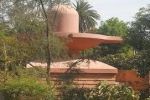
The magnanimous Shiva Linga set up in the Shankar Math attracts the tourists from all over the places. The transcendental Shiva Linga is constructed in a unique pink stone. The Shankar Math was headed by Swami Maheshanandji Giri when this marvelous Shiva Linga was made. The Shankar Math is situated quite close to the main market of the city and a must visit religious place of Mount Abu.
Gaumukh
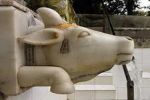
Gaumukh temple is another major religious site in Mount Abu. This temple is built in the place where, according to an old myth, Sage Vashishtha used to dwell. Sage Vashishtha performed a Yagna and created 4 clans of Agnikula to fight against Parashurama. ‘The Agni kund’ – the place where the Yagna was performed is situated nearby and is a notable place to visit.
The temple is named after a spring flowing from here which is believed to have emerged from a rock shaped in the form of a cow’s head. The cow is considered to be a very sacred animal in Hinduism. Presently a large statue of a cow built in marble is placed here and water is seen gushing out of it. Other statues like a statue of Nandi, Sage Vashishtha, Lord Krishna and Lord Ram are placed here. A beautiful temple of Arbuda – the celestial serpent is also situated near the Gaumukh Temple.
The Gaumukh Temple is located in a valley about 8 km from the main market of Mount Abu and about 5 km from the famous Hanuman temple. To reach this temple one will have to climb down about 700 stairs. The entire area around the temple is covered with dense woods and walking down the steps involves much adventure. It is not recommended to visit this temple in monsoon.
Brahma Kumari's Universal Peace Hall and University
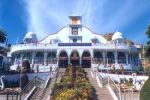
The head quarters of Brahma Kumari’s congregation is situated near Pandav Bhavan at Mount Abu. A very tranquil place where one can learn Rajyog and taste the nectar of meditation and spirituality. Three campuses namely Madhuban (Om Shanti Bhawan and Pandav Bhawan), Gyan Sarovar and Shantivan are established here. Apart from that, Peace Park, Global Hospital & Research Centre and World Renewal Spiritual Museum are also situated in this complex.
Trevor’s Tank
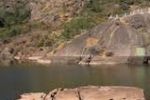
A very adorable place for the lovers of nature and a popular picnic spot in Mount Abu, ‘The Trevor’s Tank’ is situated 5 km away from the heart of the city. Trevor was a renowned British Engineer who had built this distinguished tank and so the place is named after him. Presently this tank is used to breed and nurture crocodiles.
A viewing station is built at Trevor’s Tank from where visitors can watch plenty of wildlife dwelling happily in their natural habitat. Night is the best time to watch the wild animals roaming about freely. Trevor’s Tank is also famous for the variety of bird species sighted here.
Mount Abu Wildlife Sanctuary
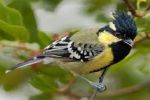
Located in the Aravalli Mountain Ranges, ‘Mount Abu Wildlife Sanctuary’ was officially declared as a Wildlife Sanctuary in the year 1960. Acclaimed for its rich variety of flora and fauna, this sanctuary provides a natural habitat to wild animals and birds. Foxes, bears, sambars, deer, wild boar, panthers, leopards, sloth bear, chinkara, langur, etc are some of the animals sheltered here. Popular for its site seeing fortune and eco tourism, Mount Abu Wildlife Sanctuary is approximately 7 km long and 300 meters wide. It is spread over the total area of 290 sq km.
As the Mount Abu Wildlife Sanctuary is perched in Aravalli Mountain Ranges, different parts of the sanctuary are situated at different altitudes. At times it is just at the elevation of 300 meters and at times it is as elevated as 1722 meters. The evergreen forest of the sanctuary is met by the grand valley of Aravalli Mountain Ranges at certain junctures. More than 112 plant families with 820 species and 449 genera can be found here. There are 157 species of monocots and 663 species of dicots. Many orchids, roses and bamboo trees can be encountered in this sanctuary.
Government Museum and Art Gallery:
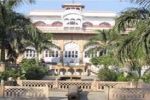
Government Museum and Art Gallery is situated at Raj Bhavan. Archeological excavations from 8th century to 12th century AD are exhibited here. Apart from this, bronze carvings and brass work monuments of Jain style are also displayed here.



